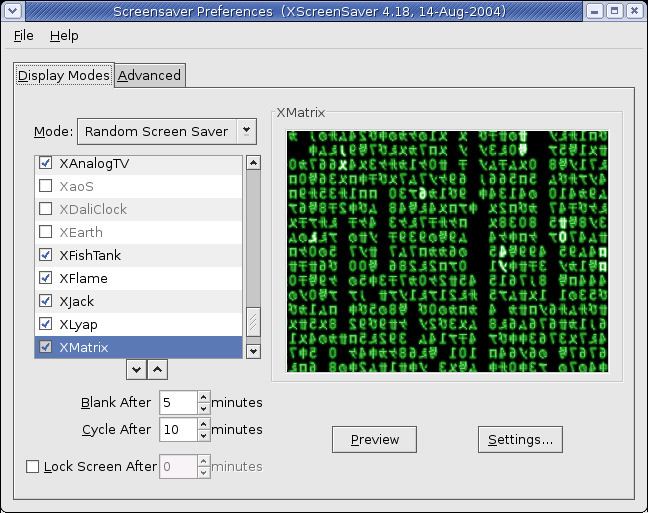Original author(s) Operating system License X11 License | Developer(s) Jamie Zawinski Type Screensaver | |
 | ||
Stable release 5.36 / 10 October 2016; 5 months ago (2016-10-10) | ||
XScreenSaver is a collection of about two hundred free screensavers for Unix, macOS, iOS and Android. It was created by Jamie Zawinski in 1992 and is still maintained by him.
Contents
The free software and open source Unix-like operating systems running the X Window System (such as Linux and FreeBSD) use XScreenSaver almost exclusively. On those systems, there are two parts to XScreenSaver: the collection of screen savers, and the framework for blanking and locking the screen.
In recent years, some Linux distributions have been using the gnome-screensaver or kscreensaver screen-blanking frameworks by default instead of the framework included with XScreenSaver. They still depend on the XScreenSaver collection of screen savers, which is over 90% of the package, with the exception of gnome-screensaver version 3 and onward, which has dropped support for screensavers completely, supporting only simple screen blanking.
On Macintosh systems, XScreenSaver works with the usual Apple screen saver framework, and X11 is unneeded.
In version 5.21 a time bomb has been introduced that displays large popups chastising the user for having an "outdated" version on login or interacting with XScreenSaver. The lock screen has similar wordage.
XScreenSaver is released under the terms of the X11 License.
Software architecture
One reason for XScreenSaver's popularity is the modularity of its design, which makes it easy to add new display modes. The display modes (termed "hacks" from the historical usage "display hack") are each stand-alone programs invoked by the xscreensaver daemon. In this way, a third-party screen saver can be written in any language or with any graphics library, so long as it is capable of rendering onto an externally provided window.
For portability, the included hacks are all written in C, using libX11 and/or OpenGL 1.3.
An important feature of the xscreensaver daemon's design is that the display modes are sandboxed into a separate process from the screen locking framework. This means that a programming error in one of the graphical display modes cannot compromise the screen locker itself (e.g., a crash in a display mode will not un-lock the screen).
On Unix systems, running the hacks from the command line will cause them to open their own non-full-screen window.
For testing purposes GLMatrix was ported to Wayland. The author choose GLMatrix because it renders with OpenGL and the ones that do not, render with Xlib, and the author did not want to port such to Cairo.
Hacks
The included hacks are highly varied, ranging from simple 2D psychedelia, to 3D demonstrations of complex mathematical principles, to simulations of other computer systems, to re-creations of artifacts and effects from movies.
Though many of the newer hacks take full advantage of the power of modern computers, the age of the project means that some of the older hacks may look dated to modern eyes, as they were originally written for much less powerful computers.
Popular hacks include:
Some of the included hacks are very similar to demo effects created by the demoscene:
